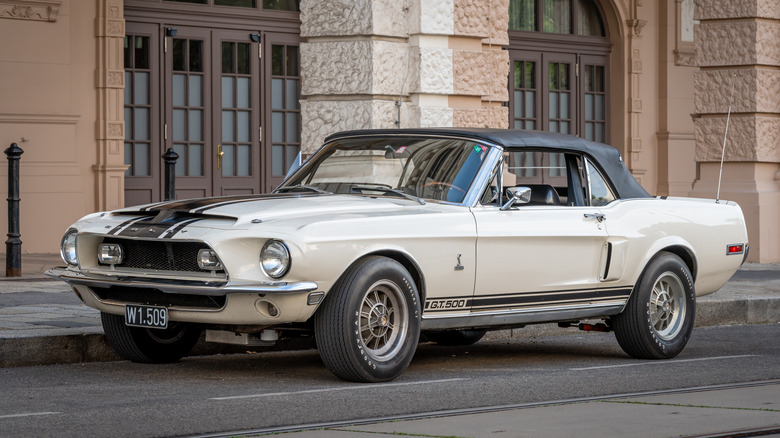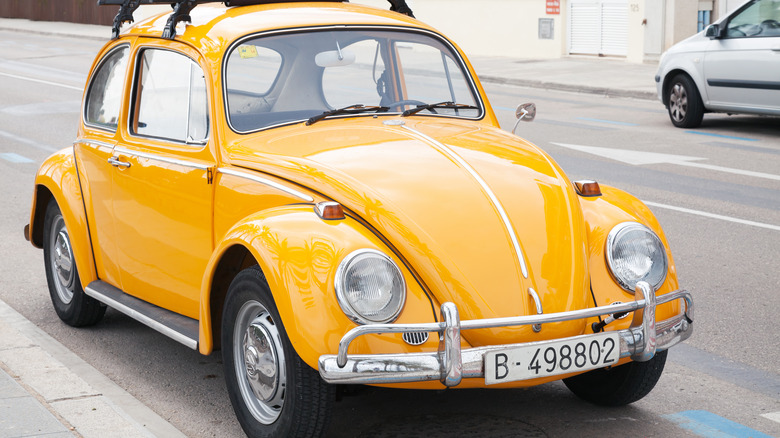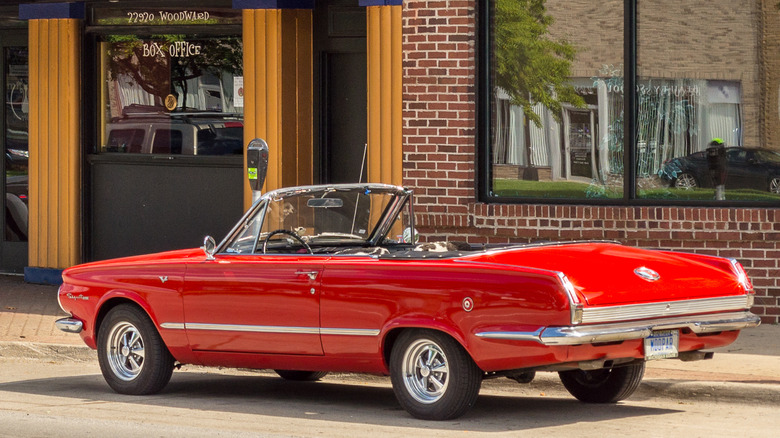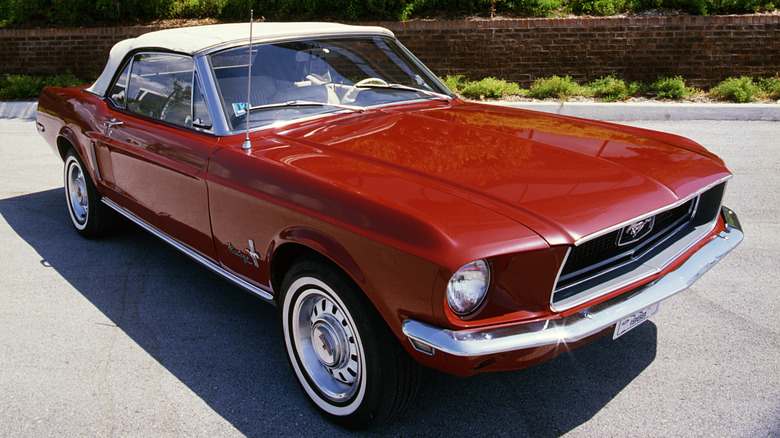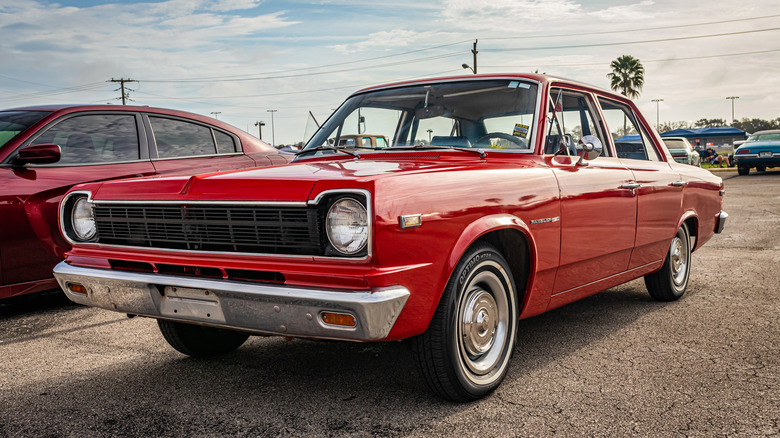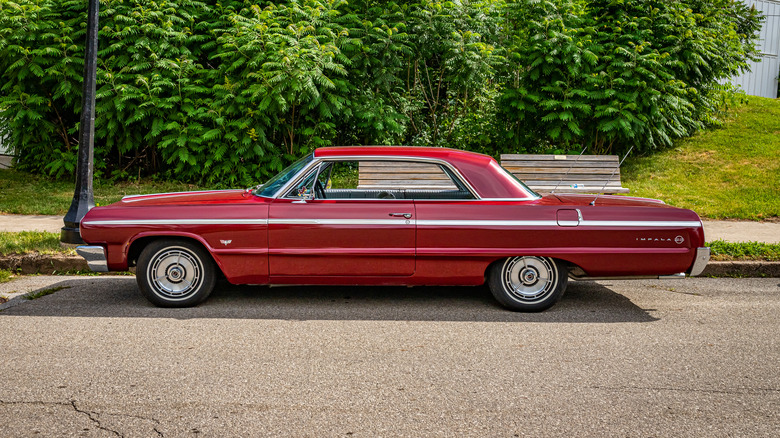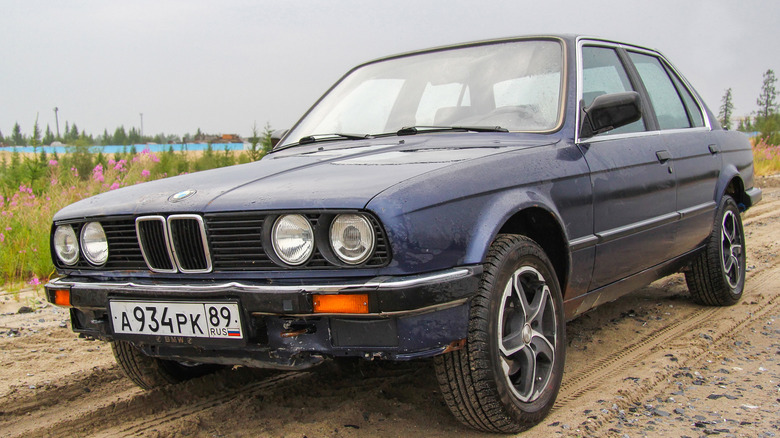6 Classic Cars That Make Great Project Vehicles
When President Dwight D. Eisenhower signed the Federal-Aid Highway Act of 1956, it jump-started a period in American automotive development that saw the production of some of the most beautiful and fun-to-drive cars in the industry's history. The classics of the late '50s and muscle cars of the '60s and '70s may have consumed enough leaded gasoline per mile to contribute to the oil crisis of the early 1970s and cause irreparable damage to the environment, but they were — and still are — a joy to behold.
For those of us with home garages or carports and tools, restoring and repairing these cars can be a satisfying way to spend our free time, as well as a wonderful way to share that time with friends and family members who share our love for these machines. While modern vehicles rely on electronic systems and can require specialized and expensive diagnostic equipment to diagnose issues, most classics can be repaired with basic tools like sockets, wrenches, and screwdrivers, along with a handful of specialized automotive tools like torque wrenches, multimeters, and the like. Here are six classic cars that are easy to work on and have robust support for replacement parts and aftermarket upgrades. They also all have substantial support networks in the form of online forums and local clubs to help when you need help troubleshooting a problem.
VW Beetle
The VW Beetle sprung from the rubble of Germany's bombed-out Wolfsburg factory after World War II and became a sales juggernaut and industry icon on the heels of Doyle Dane Bernbach's legendary "Think Small" advertising campaign. The bug even became a movie star in Disney's "Herbie the Love Bug" series of films and the subsequent short-lived TV series. The Type I Beetle was originally produced in 1945 and came to the United States four years later. The original style Beetle remained in production through the '70s, steadily gaining power and more modern amenities like fuel injection and an automatic transmission along the way. It was replaced by the New Beetle in 1998, which went through several generational updates before Volkswagen finally gave up on the Beetle for good in 2019.
Type I Beetles — the ones sold in the United States between 1950 and the late 1970s — might be underpowered and lack modern safety features, but they are remarkably easy to work on. The 1600cc engine used in many 1960s and '70s Beetles weighs only about 220 pounds and can be easily removed and installed by two people without using a hoist. More than 20 million original Beetles were sold worldwide, and they are plentiful on the secondhand market, where they can be found for just a few thousand dollars in good condition. There are thousands of VW clubs across the world offering support for owners, as well as a thriving online marketplace for parts.
Plymouth Valiant
Chrysler established the Plymouth brand in 1928 to go wheel-to-wheel with Chevy and Ford at the lower end of the emerging automobile market. However, it axed the division after the 2001 model year when its cars became too similar to Chrysler's other offerings. In its heyday during the 1960s and '70s, Plymouth made many affordable, powerful, and fun cars like the Barracuda, Fury, Roadrunner, and Valiant. The Valiant debuted in 1959 as a 1960 model, and Plymouth sold almost 150,000 Valiants in that first year. That was the first car to get Chrysler's new slant six engine, which was given its 30-degree tilt to fit under the Valiant's hood. The Valiant remained in production in sedan, coupe, and convertible form throughout the '60s, when it evolved into the Duster.
Valiants were equipped mostly with the bulletproof 170 and 225 cubic inch versions of the venerable slant six but can also be found with 273 and 318 cubic inch V8s. All of these engines have stellar reputations for longevity and tremendous aftermarket support, including fuel injection systems from Holley, Edelbrock, and FiTech. Plymouth made more than a million Valiants, and they are still available at reasonable prices. Valiants have roomy engine bays, making access to most components easy, and they can be frequently found in salvage yards in case you need body parts or other odds and ends for your project car.
Ford Mustang
The Ford Mustang was introduced at the 1964 World's Fair, and to say it was an instant hit would be a tremendous understatement. According to Motor Trend, Ford sold 22,000 Mustangs on the first day they were available and 681,000 that first year. It was originally offered with either a 170 cubic inch I6 or one of two V8s, the larger of which was Ford's popular 289 that put out as much as 271 horsepower.
In 1967, a big block 390 cubic inch V8 making 335 horsepower was added as an option, along with a 428 cubic inch Cobra Jet V-8 that generated a staggering 335 hp and 440 pound-feet of torque. These engines made the Mustang a beast on the street as well as the racetrack, and it has since become a favorite of show-going collectors and performance-oriented gearheads from coast to coast. Aftermarket and performance parts for '60s-era Mustangs are plentiful, and there is likely a Mustang club somewhere near you.
AMC Rambler
In terms of affordability and simplicity, it's hard to beat the AMC Rambler. During its original production run from 1958 to 1969, the Rambler was often the most affordable car on the domestic market; JD Power lists the base price for a 1960 Rambler American Custom four-door sedan at just over $2,000. The Rambler was updated in 1961 and 1964, and the 1965 model was the last American car to use a flathead engine, where the valves are located in the block and not in the cylinder head.
Most Ramblers got one of AMC's straight six or V8 engines; the most desirable Rambler drivetrain is the 327 cubic inch V8 and four-speed manual gearbox that was used in the 1966 Rambler Rebel. Standard-issue Ramblers don't get the attention of some of the era's other muscle cars, but the limited edition 315 horsepower SC/Rambler is the exception. Only about 1,500 of these asphalt-melting dragons were made in its only year of production, 1969.
In general, Ramblers are very accessible, often going for just a few thousand dollars on the secondhand market. Aftermarket parts for AMC engines are plentiful, and Ramblers are unsophisticated in terms of emissions control, in-cabin electronics, and other troublesome systems.
Chevy Impala
Chevy first used the Impala badge on a concept car at its 1956 Motorama show, bringing it to the showroom two years later as the top trim level of the Bel Air. The Impala became its own model in 1959, and an SS option was offered from 1961-1969 with a 409 cubic inch V8 making 360 horsepower. It stayed in production until 1986 but was revived three times: in 1994, 2000, and 2014. Classic Impalas are highly tunable, powerful, and, like most other cars of the era, remarkably simple to work on.
According to Hemmings, Chevy made more than half a million first-generation Impalas, and "few marques can rival Chevrolet for parts availability–NOS (new old stock), used or reproduction." As for the cars themselves, classic Impalas have gargantuan engine bays, making it easy to access and replace most parts. They are heavy, long, and wide, so you'll need high-capacity jacks, stands, and a roomy garage to make your work easy and comfortable.
E30 BMW 3 series
A car doesn't have to be an American-made V8-powered behemoth to make a good project vehicle. The second-generation BMW 3 series, which got the E30 designation and was sold between 1983 and 1994, has a huge catalog of aftermarket parts available due to its popularity as a race and drift car. It's also engineered fairly simply for a German vehicle, and there are plenty of E30 and general-interest BMW clubs around the world if you need support.
The late '80s or early '90s E30 might not turn as many heads as a 1965 Mustang or Impala, but it will almost certainly run well beyond the 100,000-mile mark, giving you a solid return on your investment of time and money. They're not hard to find, either. According to Hagerty, "more than two million were built," and Mark Dikeos of Pacific Motorsports in Portland, Oregon, said it's easy to pull the original motor from an E30 and replace it with a more modern BMW engine. "The S52 from the E36 M3 is a popular choice. Even the big M30 3.5-liter straight-six fits under the hood."
